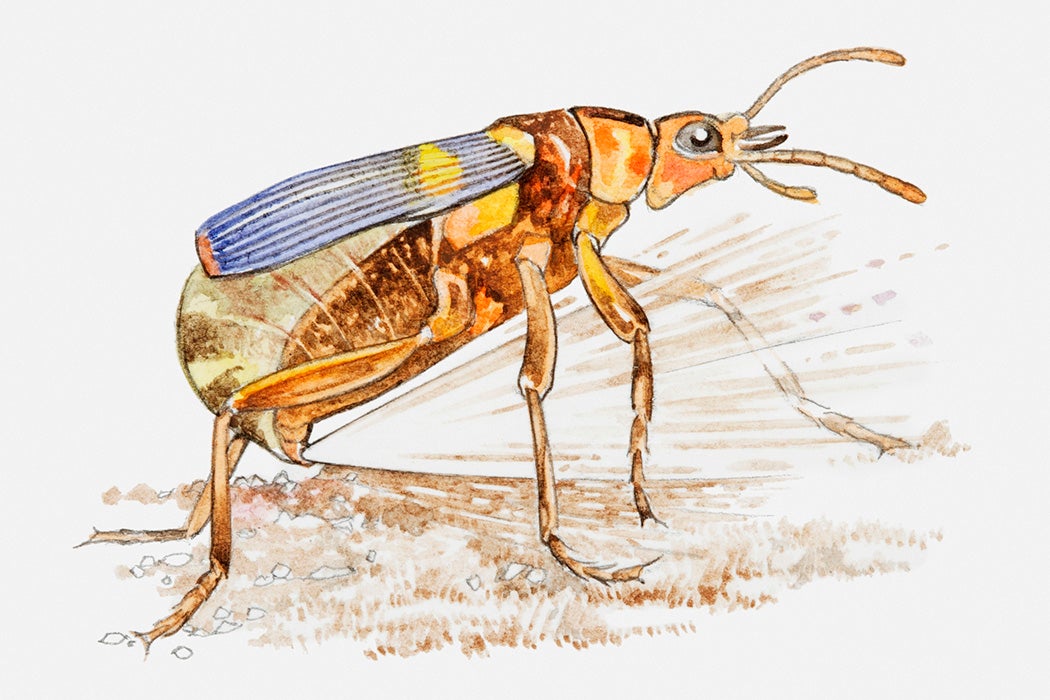In a world full of wild insect defenses, bombardier beetles stand out for the violent chemical reaction they employ to deter enemies. A viral video shows an unhappy toad learning this the hard way. Some time after swallowing the beetle, an audible explosion can be heard inside the toad. The toad soon vomits out the beetle. (Click on this link if you dare, and be sure to watch until the end.) Generally, though, the beetle’s attack is deployed long before it is swallowed. So now, put yourself in the role of a predator in search of a beetle snack. What can you expect?
The beetle’s weapons are two glands located at the rear of the abdomen (to the casual observer, its butt). The two glands are separated from one another, and each gland is further compartmentalized. When the weapon is deployed, the chemicals in one gland combine, and then mix with catalysts from the other gland in a chamber near the opening. The resulting reaction produces a fine mist of caustic chemicals called quinones, which in and of themselves are sufficient to deter most predators. But the reaction is strongly exothermic and produces a great deal of heat; the mist is a balmy 1,000°C. Thanks to the catalysts that speed up the reaction, this all happens almost immediately. Anything attacking the beetle is rapidly subjected to a spray of painful, boiling hot chemicals. And the beetle can fire the spray over and over again. It even sounds like an explosion. Which it is.
But wait, there’s more! The discharge is forced through a “nozzle” located at the opening. Some species of bombardiers can aim the spray with great precision. The beetle aims accurately at its own body parts, in response to pressure or attack. So, for example, grab one of the beetle’s lower leg segments, and the boiling spray will be directed exactly at that segment, even if the entire abdomen must be twisted to point the nozzle in the right direction. The ability is thought to have evolved as a defense against ants, which can attack from any direction. Evidently there is no safe way to grab a bombardier beetle, whether you’re an ant or not.
Unsurprisingly, this amazing ability has drawn a lot of attention from researchers, so the process is known in great detail. Closer inspection reveals that the mist is actually produced in a rapid-fire pulse of blasts, not one continuous stream. The scientists who discovered the pulses liken them to the buzzing engines of the feared Nazi V1 buzz bomb, a comparison you don’t see every day. And here’s another fun fact for you to ponder: bombardier beetle are found in every continent except Antarctica.







